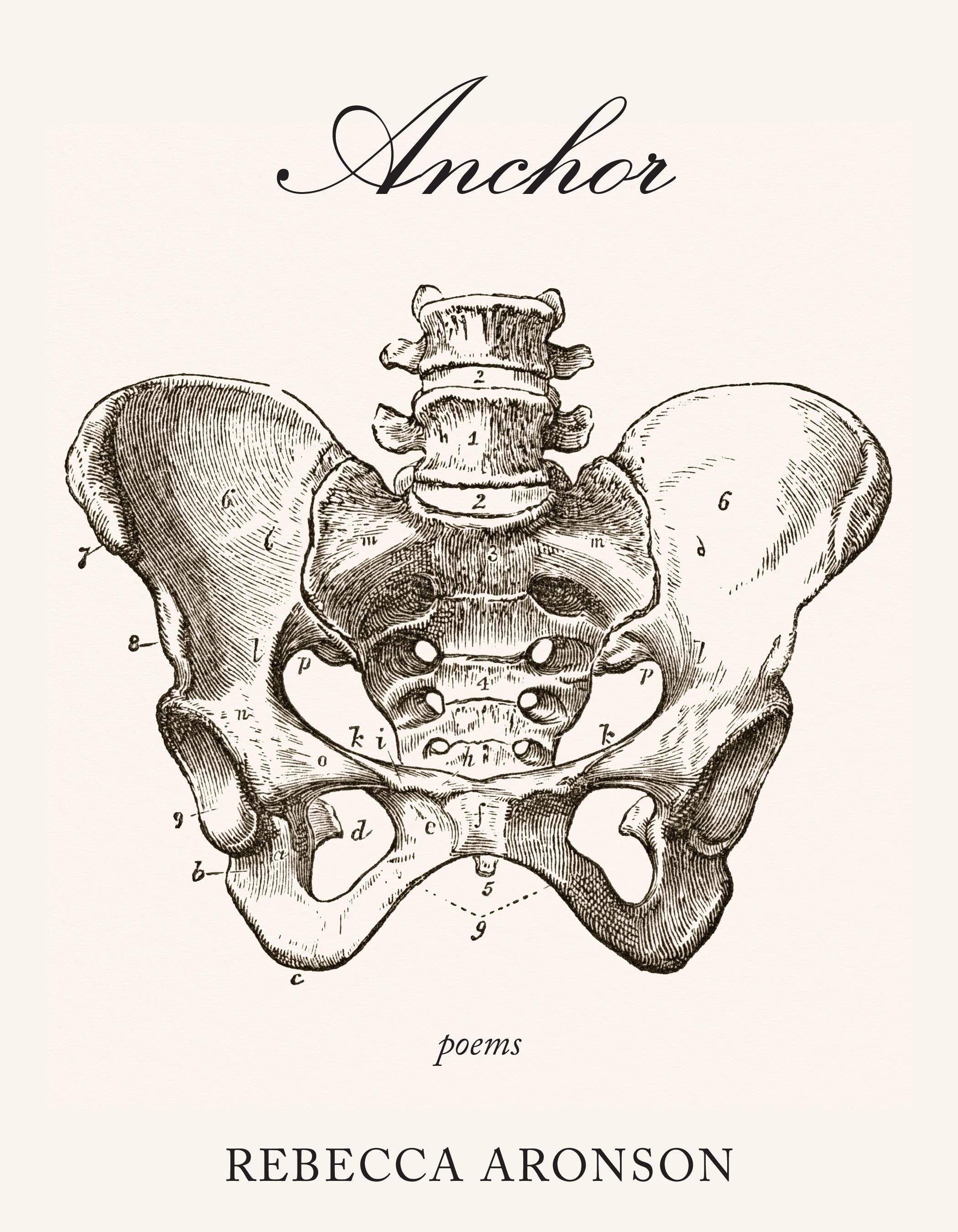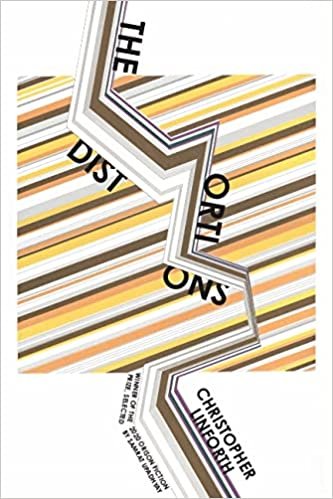Grief and Gravity: A Review of ANCHOR by Rebecca Aronson
A brief, breathtaking journey through the viewpoint of an adult child who must navigate her own parents’ decline and passing, Anchor deftly sidesteps the maudlin or macabre and invites us into a new reckoning with mortality.
“A body” writes Rebecca Aronson in her new collection, Anchor, “is a just a set of nerves in fur and spangles.” Yet these nerves at the core of our simple being can turn our lives into a labyrinth of emotion. A brief, breathtaking journey through the viewpoint of an adult child who must navigate her own parents’ decline and passing, Anchor deftly sidesteps the maudlin or macabre and invites us into a new reckoning with mortality.
Death waits just beyond the next page in this collection. The imminence of mortality, almost more than mortality itself, troubles the speaker. In a series of letter poems addressed “Dear gravity,” she cajoles the broader forces in the world—specifically, those that knock her father off his literal and metaphorical balance—for understanding of why they must do what they do. Such knowledge can’t empower us but is learning for knowing; as the speaker laments, “how vexing to be made an instrument/that measures only what can’t be mastered.” The lack of control and its associated pain cut deep in these poems, even as the narrative tension keeps us reading.
Aronson captures the absurd heartbreak of dementia with particular accuracy. One day, the devastation is palpable, and, as in “Source,” the speaker laments of her mother, “she has forgotten everything/she ever wondered.” Yet as many loved ones of dementia patients know, there are also moments of levity, as in “My Mother at the Gate”: “Sometimes/kindness descends like a fever. We walk the halls/laughing at nonsense and are briefly cheerful.” We cling to what we can, and we shake off or sit with what we wish to forget.
At once expansive and microcosmic, Anchor scrutinizes all levels of deterioration and forces at work in our world. Environmental degradation stands on its own and as a metaphor for the smaller crumblings that feel astronomical to individuals but are insignificant in the grand scheme of things. Contemplating the smoking, burning land around her in “Fire Country,” Aronson writes “the air is thick/with other people’s fires. And my own burning/is so small as to go unnoticed.” Amid all the damage that our “toddler species” does to ourselves and our planet, the individual struggles seem trivial.
Yet Aronson’s poems continually validate the significance of griefs, “those awkward pointed stars/there is no easy way to hold,” no matter how small they seem in the cosmic scheme of things. We’re reminded that even seemingly evanescent things have its importance and impact, even “the petal of your life which is brief, which is delicate and weightier than you know,” as is the chrysanthemum that gives the poem its name.
Even as its focus involves death, the cyclic nature of life crops up periodically in the collection as Aronson reminds us that those we are losing once stood in our shoes. Parenthood comes into a new focus when seen from the middle position of both being and raising a child: the “endless falling and fear of failing” that we don’t understand until we enter.
The range of responses to grief, including the struggle against the inevitable, give the collection depth and authenticity. There’s angst, resistance to the prospect of loss, anxiety, magical thinking, and eventually, a tentative consideration of the future without. “Maybe there will be hauntings,” the speaker muses in “Manifestation,” or “breaths/in the still air at significant moments, tea leaves/I will ask for advice.” We don’t get a neat resolution, a fully processed grief—instead, we stand with the speaker and look forward to a future that will come, even when we can hardly think about what it could be.
Little goes unexamined in Anchor, though “Ode” hints at a strain of deliberate identity shift, duplicity even, that piques readers’ curiosity in its difference from the other themes woven through the collection. A few other poems touch on the speaker’s own complex identity—namely “The Dress I Loved” and “Is That All There Is?”—but we’re left wanting just a bit on this front.
Like many of the best poetry collections, Anchor does not give its readers an easy ride, but the resulting catharsis, coupled with the lyricism of Rebecca Aronson’s verse, make this book a deeply moving and worthwhile read.
Semblance of History, History of Semblance: A Review of Christopher Linforth’s THE DISTORTIONS
One gathers a sense the English language lacks words to echo back “homecoming” in its proper fullness of color, so it is good then how Linforth’s stories fill in this gap if only ineffably so.
With his third story collection Christopher Linforth returns to his past in Zagreb as a source for fiction that probes the literal and psychic fragmentation of Yugoslavia. In twelve stories, including two works addressed to each an erstwhile lover, The Distortions stages ethnic Bosniaks, Croats, Serbs and others as they attempt to piece their relations sometimes to family and sometimes to interlocutors on the world stage. Piecing entails reading history even when history’s evidence seems distorted or at least too much to bear.
Characters are often readers of history in one guise or another—photographers, gravesite dwellers, philosopher-hopefuls, a “preservation assistant,” and a ghostwriter—all trying to make the pieces fit. The titular story pits the choice of immigration to the choice of staying behind insofar as one fails to grasp the other’s sacrifice. Here a failed journalist struggles to motivate his great uncle to move to New York over twenty years after the disintegration of his Sarajevo and family both. Together they face an immigration bureaucracy which, far from a Kafkaesque withholding of knowledge, asks that they search archives on and on to equally fruitless avail. This previews a returning theme implicit in the collection’s title: characters search to reconcile the rifts between past and present. History and family trees distorted, the missing pieces feel often beyond reach.
Fast forward to the capstone story: “May Our Ghosts Stay With Us” features a film scholar ghostwriting his murdered grandfather’s autobiography after having found a diary. Compared to a previous story lamenting that communication is fraught—“words are just black marks on a page”—our scholar turns toward and away from nihilism and a Derridean anxiety, by his own admission, that representation is “adrift in time.” “Life” one character says “has nothing to do with theory,” yet how can one make sense of “flecks of gray” or “grainy images” without speculation and when meaning invests them only half-way? Grayness for narrators often refers to distortion as well as backdrops of cities in which “Communist concrete” is a characteristic trait.
Against an absurdity that history is bound to eternal recurrence, characters hope they can—perhaps maybe—intervene in its rush if only to save a single person from vanishing. While for those of whom the wars are a thing of the past, the prospect of losing another loved one still tends to shake the past loose to the present. The effect is that dissolution never goes away.
Linforth crafts time and place subtly. A peripheral character’s age, a gesture to a sitting president, an iPhone. The literal distance from the wars becomes instead a task for characters and readers to take on. Rather than confront warring headlong, Linforth writes conflict around war’s periphery and aftermath. Forgotten landmines and wounded animals astray become points of contact whilst war looms in background or memory. Reunited with news reportage, archival files, passports, letters, dolls, postcards, maps, diaries, and more, characters in one extreme try to “restore them to their pure, original state” or, in another, interpret in them futility.
The trauma of killing or failing to save one’s countrymen is less rendered through militancy than vicariously through the rescuing or doing-in of an innocent animal. In “Fatherland,” for example, a new father searches for a metal spade once used to bury a bird he had bullied a boy into killing when they were tasked with defending a border. This echoes back to “All the Land Before Us” in which a teenage boy attempts to save face with a Hungarian traveler to whom he is attracted while she fails to save a dog he had shot. Similarly, this motif of freeing or ignoring the embodied pain of others lines up with Linforth’s scrutiny toward preservation. There is an insight that photographers contemplating the past frozen into an image also question whether photography saves bodies from time’s indifference or simply records their powerlessness, at times their perversion.
Another subtlety not to overlook is Linforth’s writing of split commitments. It is not just the immigration-versus-staying-behind of the first story on display. Folded into stories is a tension between committing to various sides: one continent over another, one family over another, one economy over another, between an old and new millennium, between analog and digital even. These contradictions cling to a dialectic of enchantment and its loss.
One would be remiss to discuss this collection without attention to its characterization. Each story contains wholly new people, whether nostalgic or forgetful, cosmopolitan or national. One memorable foil is of a veteran of the Croatian army who begrudgingly hosts an emigrant-cum-businessman around town. Their restrained animosity begs them to reconsider how they can each be “men of the world” in their own way. Some characters are jaded with intellectualism yet ready still to cash out its clout in an academic or artistic career. Through bold decisions others even show vanity, infidelity, impudence, and as the collection progresses, a ghostliness “impervious to those around” them. While though some stories rely on a character’s flaw to hurl forward their plot, one could not say Linforth falls into the illusion that an isolated human agency is what makes a story.
To put it otherwise, Linforth focuses craftsmanship into the relation between character and world. A relational approach also informs the logic of his endings. The arc of many stories aims toward a homecoming, and each ending makes an iteration of one, be it partial or thwarted. These endings resist a clear or sentimental homeliness. Instead they destabilize what grounds here from there, teaching readers to contemplate dislocation. One gathers a sense the English language lacks words to echo back ‘homecoming’ in its proper fullness of color, so it is good then how Linforth’s stories fill in this gap if only ineffably so.
All the while thematizing distortion, Linforth writes with a clarity that, in service to characters, never need slip in some smokescreen for clever effect. Time’s passage, will, intellect—for characters these are bound to their terms in an honest-heartedness recalling Andre Dubus. It is with this balance between character and concept that The Distortions invites rereading. Between imperfections shading the histories that characters traverse in gray, there are still moments of clarity to be found, moments sometimes rendered in landscape or “reds and whites” brimming to fullness. In the lives of Linforth’s characters, what can seem fragments of a worldly cipher might instead be a sign—that wholeness has little to do with appearances and a lot to do with reappearing for others.


